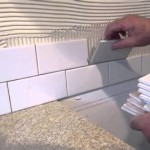A Comprehensive Guide to Spanish Tile Roof Construction
Spanish tile roofs have graced homes for centuries, their distinctive aesthetic and exceptional durability making them a popular choice among homeowners. If you're considering installing a Spanish tile roof or simply want to learn more about this traditional roofing material, this guide provides essential information on the design, materials, installation, and maintenance aspects.
Types of Spanish Tiles
Spanish tiles come in various shapes, sizes, and colors, offering homeowners a wide range of options to complement their home's architectural style. The most common types include:
- Pan Tiles: Flat, rectangular tiles with a curved edge, creating a distinctive overlapping pattern.
- Barrel Tiles: Cylindrical tiles that are half-round in shape, providing a smooth, rounded appearance.
- Mission Tiles: S-shaped tiles with a flatter profile than pan tiles, creating a more streamlined look.
Materials and Installation
Spanish tiles are typically made from clay or concrete. Clay tiles are more traditional and offer excellent durability, but they are also heavier and more expensive than concrete tiles. Concrete tiles, on the other hand, are more lightweight and cost-effective, but they require more frequent maintenance.
Installing a Spanish tile roof requires specialized skills and techniques. The tiles are laid in overlapping rows, with a breathable underlayment beneath to prevent moisture buildup. Skilled roofers ensure proper ventilation and drainage to optimize the roof's performance.
Advantages of Spanish Tile Roofs
- Durability: Spanish tile roofs can last for decades, withstanding extreme weather conditions and requiring minimal maintenance.
- Fire Resistance: Clay and concrete tiles offer exceptional fire resistance, providing peace of mind in case of fire.
- Energy Efficiency: The thick, heavy tiles insulate homes well, reducing energy costs and improving indoor comfort.
- Aesthetic Appeal: Spanish tile roofs add a timeless charm and elegance to any property, enhancing curb appeal.
Maintenance Considerations
While Spanish tile roofs are generally low-maintenance, regular inspections and cleaning are essential to ensure their longevity. This includes:
- Inspection: Inspect the roof annually for any broken or deteriorating tiles, loose fasteners, or blocked gutters.
- Cleaning: Periodic cleaning removes dirt, debris, and moss that can accumulate on the tiles and impair performance.
- Repairs: Promptly repair any damaged tiles or components to prevent further issues and maintain the roof's integrity.
Conclusion
Spanish tile roofs are a timeless and practical choice for homeowners who value durability, energy efficiency, and aesthetic appeal. By understanding the different types of tiles, materials, and installation techniques, homeowners can make informed decisions about installing and maintaining a Spanish tile roof that will enhance their home for generations to come.

Pin Page

Spanish Roofing How To Achieve A Santa Barbara Style Roof

Roof Tiles The Complete Guide To Tile Roofing

Spanish Roofing How To Achieve A Santa Barbara Style Roof

Spanish Tile Roof Guide For 2024 S Style Lifespan

Is A Spanish Tile Roof Right For Your Home Digital Roofing Innovations

Roof Tiles The Complete Guide To Tile Roofing

Roof Tiles The Complete Guide To Tile Roofing

Spanish Roofing How To Achieve A Santa Barbara Style Roof

Pin Page
Related Posts







